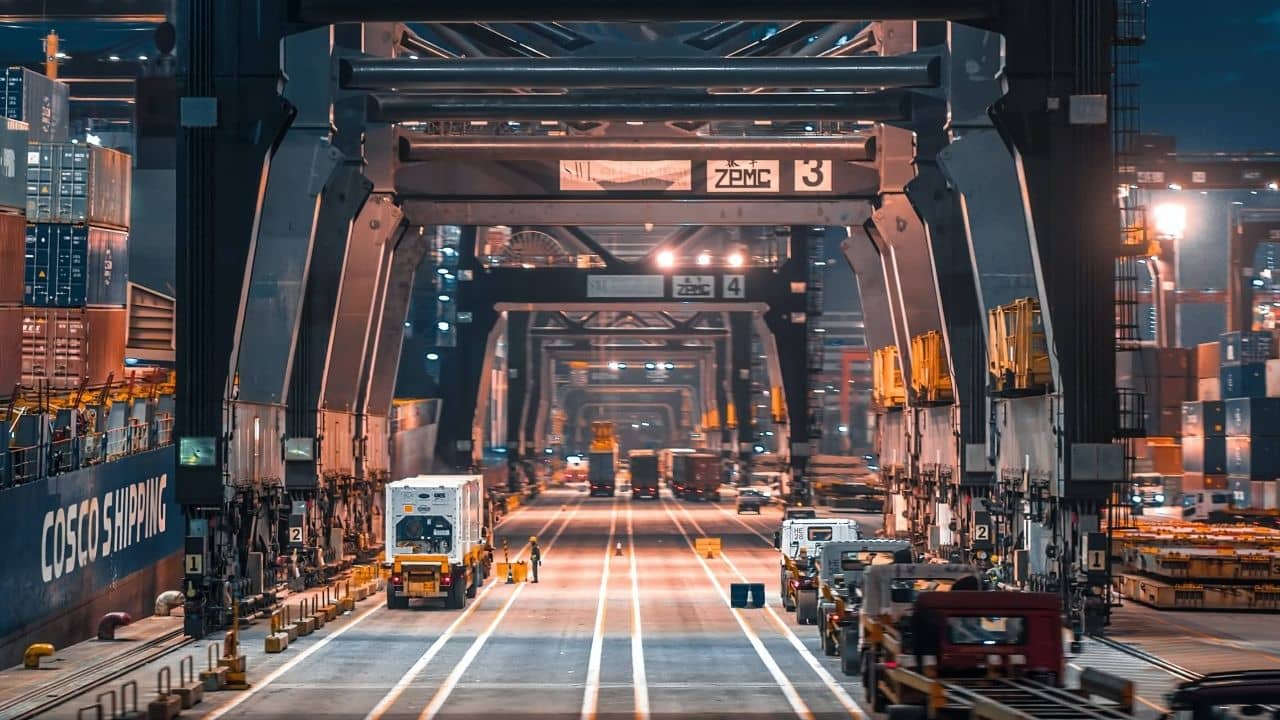
Cargo Backlogs in China as the Covid Crisis Drags On
6-minute read
As Shanghai enters the fourth week of its zero-tolerance Covid lockdown, forward export bookings are said to be down by 40% or more, prompting carriers to consolidate loads and blank more sailings.
According to one carrier contact, lines may be obliged to implement a “hardcore” blanking strategy to mitigate the impact of the cargo shortfall. The source said many of the numerous containerships currently at anchor off Shanghai port are “simply waiting for new orders”.
The concern is growing that the spread of COVID cases and city lockdowns in China will have massive downstream effects on global supply chains that could surpass previous disruptions since the pandemic.
Last May, the huge Yantian container terminal at the Port of Shenzhen throttled down to 30% of normal productivity for a month to stamp out a handful of positive cases there.
Hundreds of thousands of shipments that couldn’t enter the port accumulated in factories and warehouses, and many vessels skipped the port to avoid waiting seven days or more at anchor.
It took weeks after the port reopened to clear the cargo backlog. The effects cascaded worldwide, resulting in port traffic jams, transit times triple the norm and missed retail deliveries for the holidays.
The difference this time is that an entire metropolis — and highly interconnected global trade centre — is essentially shut down. Not since the initial 2020 COVID-19 outbreak in Wuhan have lockdowns been this extensive in China.
“It’s probably worse than Wuhan,” said Jon Monroe, an ocean shipping and supply chain expert who runs a consulting firm.
“You’re going to have a lot of pent-up orders. It’s going to be an overwhelming movement of goods” that will drown shipping lines and ports once the lockdowns are lifted.
Freight is Piling Up
Twenty-five million people in Shanghai have been sequestered for more than three weeks now. Chinese authorities last week slightly eased the restrictions, dividing the city into three categories based on previous screenings and risk levels.
People can wander outside their apartment buildings but are encouraged to stay home in neighbourhoods with no positive COVID-19 cases in the past two weeks. Those in high-risk areas must still shelter at home.
Industry experts predict that Chinese authorities will stick to the “zero-COVID” strategy and lockdowns until at least June. Other China observers say it could take even longer to meet China’s infection standard.

Shanghai is one of the largest manufacturing centres in China, with heavy concentrations of automotive and electronics suppliers. It is home to the largest container port in the world and a major airport that serves inbound and outbound air cargo.
Exports produced in Shanghai account for 7.2% of China’s total volume, and about 20% of China’s export container throughput moves through the port there.
Most warehouses and plants are closed, nine out of 10 trucks are sidelined, the port and airport have limited function, shipping units are stranded in the wrong places, and freight is piling up.
More and more, the logistics impacts are rippling beyond the contagion epicentre.
Impacts Spread Beyond Shanghai
Export containers that were already at the Port of Shanghai when the lockdown started are making it onto vessels. However, most goods booked on outbound vessels are stranded at warehouses because shuttle trucks can’t make pickups or deliveries.
Truckers require special permits, which are only good for 24 hours, as well as negative COVID tests to get in and out of the city or enter certain zones, according to logistics providers. Checking COVID certificates has led to huge traffic jams at the port.
Some logistics providers report that truck drivers in the Shanghai area are being forced to wait up to 40 hours at certain highway entrances. Trucking rates have soared because of the limited supply, and shippers are waiting three to five days for cargo to get picked up.
Reduced manufacturing output and limited truck access to the port and airport are causing a significant drop in air and ocean export volumes. Less demand is translating to lower freight rates.
Air carriers have announced widespread cancellations in response to the lack of labour and cargo, and some ocean carriers are skipping Shanghai port calls.
Several shipping lines have also begun offloading refrigerated containers at other ports along their voyage because the storage area with electric plugs is too crowded in Shanghai. Customers face extra port fees and delays routing the cargo to its intended destination.
Maersk, the second-largest container vessel operator, said it has stopped accepting bookings to Shanghai for refrigerated cargo, some types of gas and flammable liquids.

According to Crane Worldwide Logistics and other service providers, more omissions are expected, and liner companies may temporarily idle vessels or cancel some outbound Asia sailings altogether.
“But even if the lockdown persists and demand drops significantly, ocean carriers will likely reduce capacity, which could keep rates from plummeting, just as they were able to do in the first few months of the pandemic when ocean volumes fell significantly, but transpacific rates declined by less than 15% and were about level year on year.”
The supply chain is backing up like water behind a dam. When water is released, the landscape gets flooded.
At Shanghai Pudong airport, ground handling companies are operating with a skeleton staff.
Shanghai Eastern Airlines Logistics, a cargo terminal operator, ceased bulk loading of containers after a positive COVID case, further slowing cargo processing, said Dimerco, a Taiwan-based freight forwarder.
Airlines report that Pactl, which operates three other cargo terminals, has suspended acceptance of dangerous goods and temperature-controlled cargo because the warehouse is full.
Flexport said in a market update that 80% of commercial freighter services had been cancelled, and airlines are considering shifting operations to nearby airports.
Qatar Airways announced that freighter flights will remain cancelled until next Thursday, saying, “the latest COVID-19 restrictions announced by local authorities limit our ability to operate flights in and out of Shanghai with sufficient cargo loads.”
Freight forwarders have been rerouting cargo to alternative airports such as Zhengzhou, Xiamen, Shenzhen and Beijing, as well as the Port of Ningbo. However, those facilities are beginning to feel congestion effects themselves. Rates to ship from those locations are increasing.
According to some forwarders, flights at Zhengzhou Xinzheng International Airport are reduced by 50%.
Most inbound cargo there is transit cargo to other cities, such as Shanghai, compounding backlogs because the cargo isn’t allowed to move to the final destination. Logistics companies can only clear shipments that customers can pick up in Zhengzhou.
Dimerco advises that Zhengzhou airport is not accepting loose cargo – only palletised shipments – because of labour challenges.
And it has just implemented a 14-day closed-loop program in which workers live on-site to minimise the potential for virus transmission, forcing the logistics provider to pivot again and reroute shipments to other airports, including back to Shanghai’s second airport – Hongqiao International.

Ships Delayed at Port of Hong Kong and Yantian
Shipping schedules in South China are being impacted by irregular feeder vessels and large barge services, creating delays for transoceanic vessels at Hong Kong and Yantian ports, according to a situational update from the supply chain data platform project44.
Nearby manufacturing hubs in Vietnam and Cambodia are already suffering from a shortage of Chinese components for their manufacturing industries, project44 reported. And pharmaceutical companies in India, which source 70% of their active ingredients from China, are facing limited supplies.
Ocean shipping delays from the top three Chinese ports to Hamburg, Germany, and Amsterdam had already doubled to more than 12 days during the first quarter before the Shanghai lockdown fully materialised, according to project44 data.
Ocean freight expert Lars Jensen, CEO of Vespucci Maritime, summed up the situation on his LinkedIn page this way:
“Until this situation is resolved — which appears next to impossible when matching the omicron variant with zero-tolerance — we should expect drops in export demand, port omissions and more blank sailings in the near term future as well as Shanghai-bound cargo increasingly being discharged elsewhere.”
COVID Lockdowns Spread
Meanwhile, COVID infections are spreading beyond Shanghai, according to news reports and logistics companies.
The southern manufacturing hub of Guangzhou, for example, has started mass COVID testing, introduced travel restrictions and shifted schools to online learning — steps that often portend a wider lockdown.
A surge of new COVID cases is hitting the coastal cities of Dalian and Tianjin in the north, Ningbo in the east, and Xiamen and Dongguan in the south.
Ningbo officials ordered residents in two downtown districts to sequester at home, but the seaport is not affected so far. Port operations in Nantong have been severely impacted, with logistics companies diverting shipments to Nanjing. Zhangjiagang is experiencing slower port operations and some factory closures.
Many shippers exercise contingency plans and use alternative import/export gateways when possible, but road transport is increasingly difficult.
The outbreaks have led to a virtual ban by authorities on truck drivers from high- and medium-risk areas transporting cargo to low-risk areas. That includes transporting cargo from Shanghai and Kunshan to the Port of Ningbo.
No cargo will be accepted if drivers have been to medium- or high-risk areas within the last 14 days or the factory is located in medium- or high-risk areas said UPS Supply Chain Solutions in a customer update.
Dimerco said traffic control for road transportation is getting more strict, and it is difficult to secure trucks to bring freight to Shanghai or alternative ports.
Cargo backlogs in Shanghai could become a precursor to global port congestion as the COVID crisis drags on. It is expected to overwhelm global ports once Chinese authorities end widespread Covid lockdowns.
Source: FreightWaves and The Loadstar
P.S. Easy Freight Ltd helps New Zealand importers & exporters to save money on international freight and reduce mistakes by guiding how to comply with Customs and biosecurity rules.
➔ Contact us now to learn how we can assist you.
